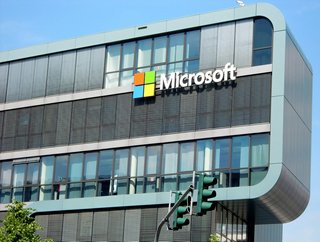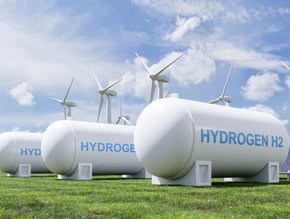Microsoft & Brookfield Sign World’s Biggest Clean Power Deal

One of the world’s leading technology companies has signed a multi-billion-dollar deal to bring a staggering 10.5GW of generating capacity online.
Microsoft has signed a corporate clean-energy purchase agreement — the largest ever announced — with Brookfield Renewable Partners as the technology giant’s investment in AI continues to gather momentum, putting energy pressures on its data centres.
Starting in 2026, Brookfield will facilitate more than 10.5 gigawatts of renewable energy capacity, the equivalent of 10 nuclear power plants.
More details about the partnership have not been disclosed.
“We want to use our influence and purchasing power to create lasting positive impact for all electricity consumers,” Microsoft’s General Manager for Renewables Adrian Anderson told the Financial Times.
A landmark renewable energy deal
Said to be eight times larger than the previous single biggest corporate renewable electricity purchase agreement, according to Brookfield, this deal will focus primarily on solar and wind power generation, with ‘new or impactful zero-emission energy generation technologies’ also included.
This is an unsurprising move for Microsoft, as it is one of the world’s largest corporate buyers of renewable energy. It currently has more than 20GW of renewable energy under contract.
In 2021, it ranked among the top green power users thanks to its harnessing of small-hydro, wind and solar power resources which powered the entirety of its 6.7bn kWh electricity use.
Microsoft has more than 5GW of data centre capacity in operation and expects to add 1GW of server power over the next six months, followed by 1.5GW of new data centre capacity in the first half of 2025.
James Phillips, Director of Global PPA and Origination at Brookfield, said of the landmark deal with Microsoft: “Through the global framework agreement, Brookfield and Microsoft will contract over 10GW of new build renewable capacity in the US and Europe before 2030. We have huge plans to build on our existing c.33 GW of global renewable operating assets, and it's partnerships like this that will make it happen.”

What are Microsoft’s 2030 targets?
Microsoft has pledged to be carbon negative by 2030, meaning it will offset more emissions than it emits. This is supported by its carbon removal portfolio, which utilises a portfolio of negative emission technologies such as afforestation, reforestation, soil carbon sequestration, bioenergy with carbon capture and storage and direct air capture.
Microsoft’s Climate Innovation Fund will have invested US$1bn between 2020 and the end of this year to accelerate carbon reduction and removal thanks to innovative new technologies.
“While we at Microsoft have worked hard to be carbon neutral since 2012, our recent work has led us to conclude that this is an area where we’re far better served by humility than pride,” Microsoft’s official blog said.
It has also committed to reaching net zero by 2050, which involves removing all the carbon the company has emitted since its founding in 1975 from the environment. This includes reducing its Scope 1 and 2 emissions by the same date, transitioning to 100% renewable energy for its data centres, buildings and campuses, as well as electrifying its global campus operations vehicle fleet by 2030.
There is a slightly different approach to its Scope 3 emissions, however — it aims to reduce these by more than half by 2030 through various initiatives, including implementing an internal carbon tax for all business divisions and working with suppliers to reduce emissions.
As well as this, Microsoft aims to empower customers to reduce carbon footprints using data science and digital tools, partnering for low-carbon solutions. This also comes from prioritising transparency by disclosing their carbon footprint and supporting industry standards in annual reports. It will remain firm in its advocacy efforts in global carbon research, regulatory barrier removal and market mechanisms and encouraging employee engagement to emphasise how collective action is vital to carbon reduction and removal.
Microsoft Vice Chair and President Brad Smith said: “While the world will need to reach net zero, those of us who can afford to move faster and go further should do so.”

*******************
Make sure you check out the latest edition of Energy Digital Magazine and also sign up to our global conference series - Sustainability LIVE 2024.
*******************
Energy Digital is a BizClik brand.






